Through the ages, people have attributed meaning to unusual celestial apparitions such as comets. Such is the case for perhaps the most famous comet, the one named after British astronomer Edmond Halley, who determined that periodic sightings of a comet were in fact of the same object. Although recorded sightings of Halley’s Comet go back more than 2,000 years, its most famous association is with the Norman invasion of England in 1066, including the first illustration of the comet on the Bayeux Tapestry. Making an appearance roughly every 76 years, during its last close approach in 1986 several nations dispatched spacecraft for a close examination of this celestial visitor to the inner solar system. Other comets have since received close scrutiny, increasing our understanding of these primordial objects.
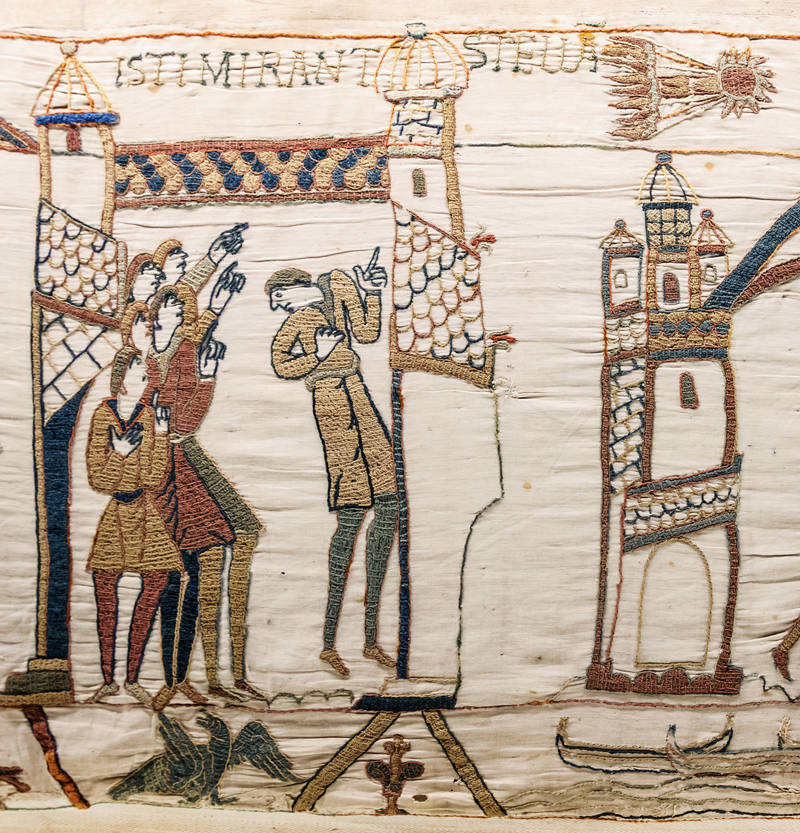
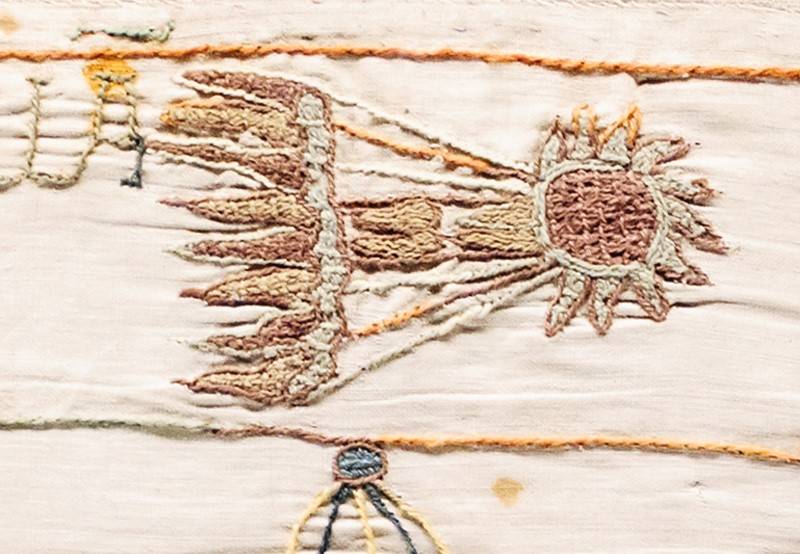
Left: Scene from the 11th century Bayeux Tapestry showing the scene of the Battle of Hastings with a comet in the sky. Right: Close up of the comet from the Bayeux Tapestry. Credit: Images courtesy Anglo-Saxon Archaeology.
Although possible records of Halley’s Comet from its 467 B.C.E. apparition may be found in Greece and China, the first positive observations date to 240 B.C.E. in the Chinese chronicle “Records of the Grand Historian” or “Shiji.” Over the subsequent centuries, observations of what is now known to be Halley’s Comet are found in Babylonia, China, Japan, India, the Middle East, Europe, and even possibly on petroglyphs in North America. People in those societies often associated its appearance with dramatic political and social events, such as the defeat of Attila the Hun in 451 C.E. or the death of kings. During its 1066 appearance, Halley’s Comet approached within nine million miles of Earth. As it first appeared in April of that year, observers in England saw it as a bad omen, portending great change for the Anglo-Saxon kingdom ruled by King Harold, while Duke William of Normandy believed it was a positive sign from heaven. In late September, William’s army landed in England and on Oct. 14, 1066, he defeated Harold’s army at the Battle of Hastings, killing the Anglo-Saxon king. On Dec. 25, William was crowned King of England, changing the nation’s history forever. The 11th century 230-foot long Bayeux Tapestry, more accurately an embroidery and most likely made in England, depicts scenes leading up to the Norman invasion of England and William’s ascendancy to the English throne. One of the scenes depicts a comet that has been identified as the first illustration of Halley’s Comet.
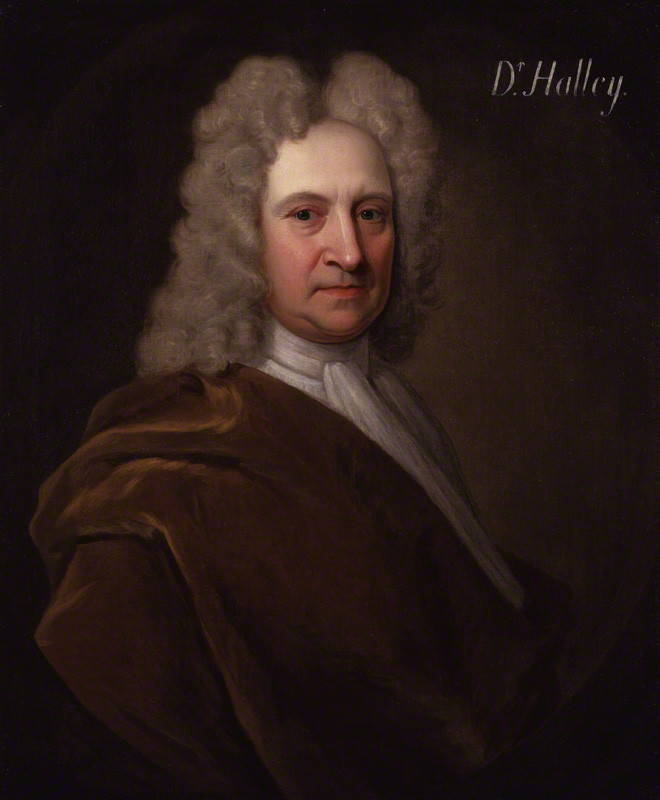
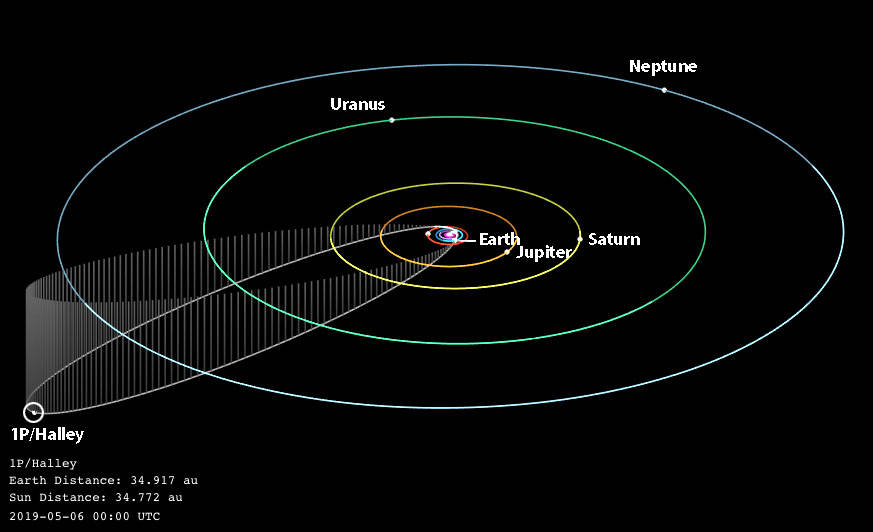
Left: Portrait by Richard Phillips of British astronomer Edmond Halley. Credit: Image courtesy National Portrait Gallery. Right: The highly elliptical retrograde orbit of Comet 1P/Halley.
Halley’s Comet continued to make repeat appearances in the inner solar system, but it wasn’t until 1705 that British astronomer Edmond Halley, using Isaac Newton’s recently published theories of gravitation, planetary motions, and the mathematical tool of calculus, determined that the comets seen in 1531, 1607, and 1682 were actually one and the same object with an orbital period of about 76 years. He correctly predicted the comet would next appear in 1758, although close passes by Jupiter and Saturn delayed its appearance by a few months. To honor Halley’s prediction, astronomers named the comet after him and today it is officially known as 1P/Halley, the P denoting it is a periodic comet.
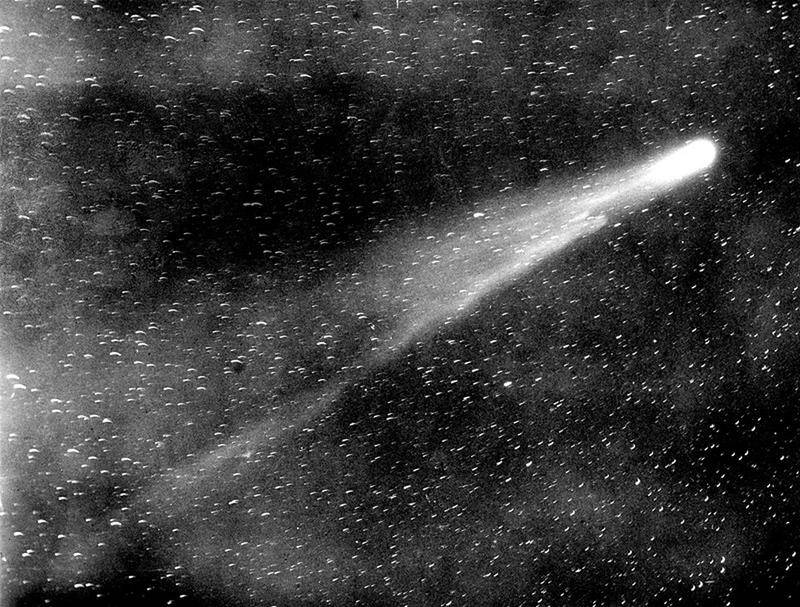
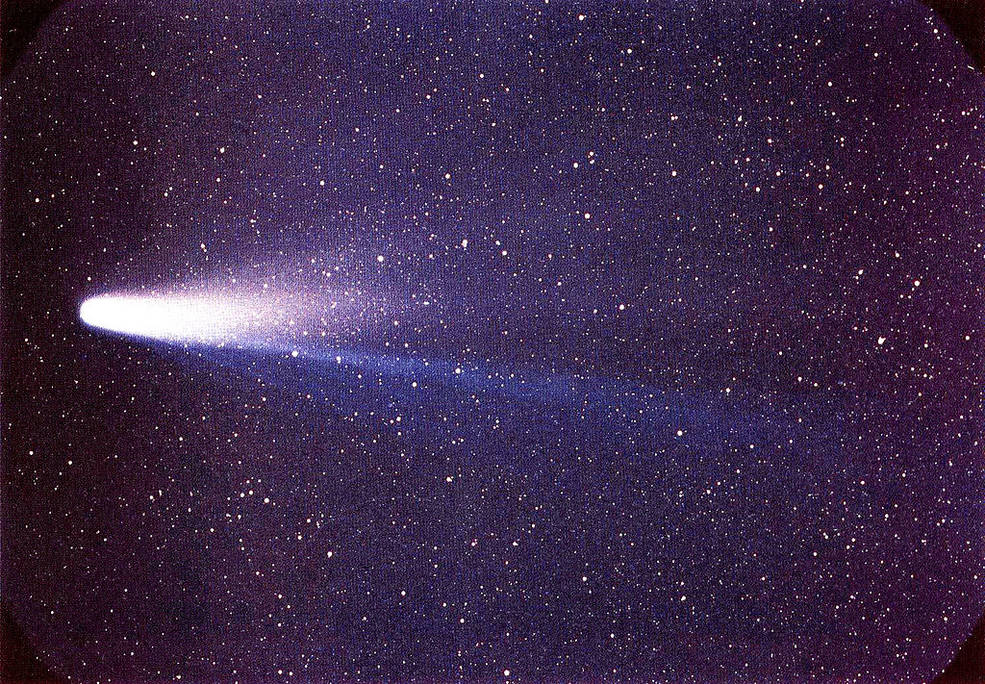
Left: The 1910 apparition of Comet Halley. Credit: Image courtesy
The Library of Congress. Right: Comet Halley as it appeared in 1986.
Halley’s Comet continued its periodic return to the inner solar system in 1835, 1910, and 1986. In its highly elongated orbit, it approaches to within 55 million miles of the Sun at perihelion, within the orbit of Venus, and departs to reach aphelion or greatest distance from Sun past the orbit of Neptune. The actual frequency of its apparitions varies from 74.4 to 79.3 years depending on close approaches to the planets. It is during its perihelia that the comet develops its signature tail, gas and dust released as the Sun heats its nucleus. Its apparent size and brightness from Earth depend on the distance between the two objects. As telescope technology advanced, astronomers made better and more detailed observations of Halley and other comets, but the objects remained mysterious regarding their origins and composition. During the 1910 apparition that provided the first photographs of the comet, the Earth passed through the comet’s tail, leading to some popular unease and added to the unrest in China that led to the fall of the Qing Dynasty in 1912. In an interesting historical quirk, American writer Mark Twain, born two weeks after the comet’s 1835 perihelion, died the day after its 1910 perihelion. The 1986 apparition provided the first opportunity for spacecraft to study Halley’s Comet up close, and an international collaboration called the Halley Watch included a veritable flotilla of spacecraft, informally known as the Halley Armada, dispatched to observe the most famous comet. The 1986 apparition proved somewhat disappointing to Earthbound comet watchers, since the two objects were on opposite sides of the Sun during the comet’s perihelion.
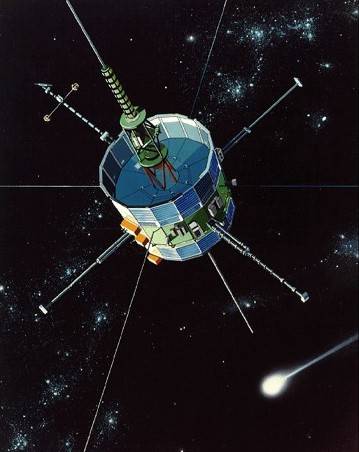
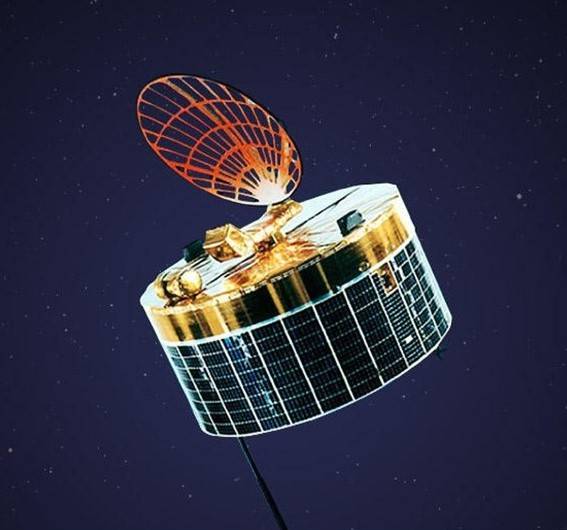
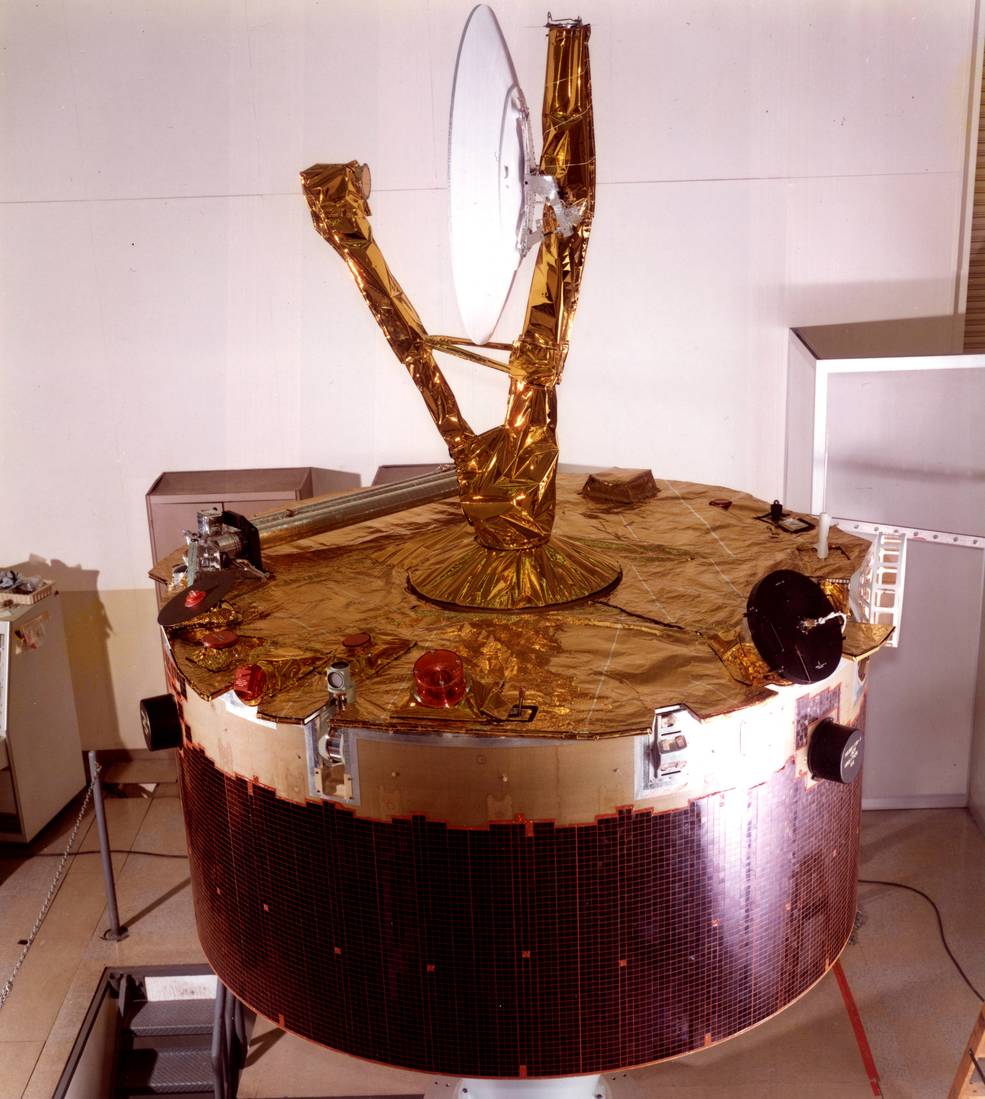
Left: Illustration of the Interplanetary Comet Explorer (ICE) spacecraft. Middle: Illustration of the Japanese Suisei and Sakigake spacecraft. Credit: Image courtesy Institute of Space and Astronautical Science. Right: The Pioneer Venus Orbiter spacecraft during preflight testing.
Prior to the observations of Halley’s Comet, on Sept. 11, 1985, the Interplanetary Cometary Explorer (ICE) spacecraft completed the first ever close encounter of a comet when it passed through the 14,000-mile-wide tail of Comet Giacobini-Zinner at a distance of 4,850 miles from its central nucleus. The ICE spacecraft contributed to the Halley Watch observations by measuring the solar wind upwind of Halley’s Comet on Oct. 31, 1985, and March 28, 1986. The Japanese Institute of Space and Astronautical Science, now part of the Japan Aerospace Exploration Agency, dispatched two nearly identical spacecraft called Suisei and Sakigake to observe Halley’s Comet. Suisei made ultraviolet observations of the comet, approaching to within 94,000 miles of the comet’s sunward side on March 8, 1986. Its twin Sakigake observed the comet from 4.3 million miles away. The NASA Pioneer Venus Orbiter spacecraft, orbiting Venus since December 1978, used its ultraviolet spectrometer to monitor the loss of water from the comet. Because of Venus’ position, it made its measurement in February 1986 at a time the comet was unobservable from Earth due its close apparent proximity to the Sun.
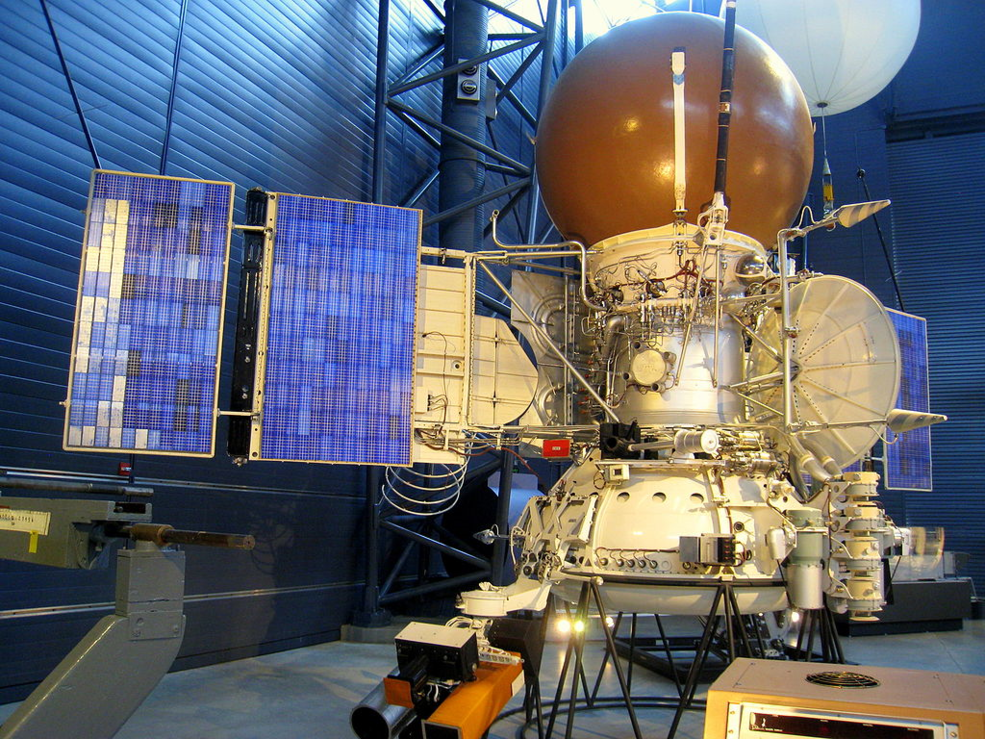
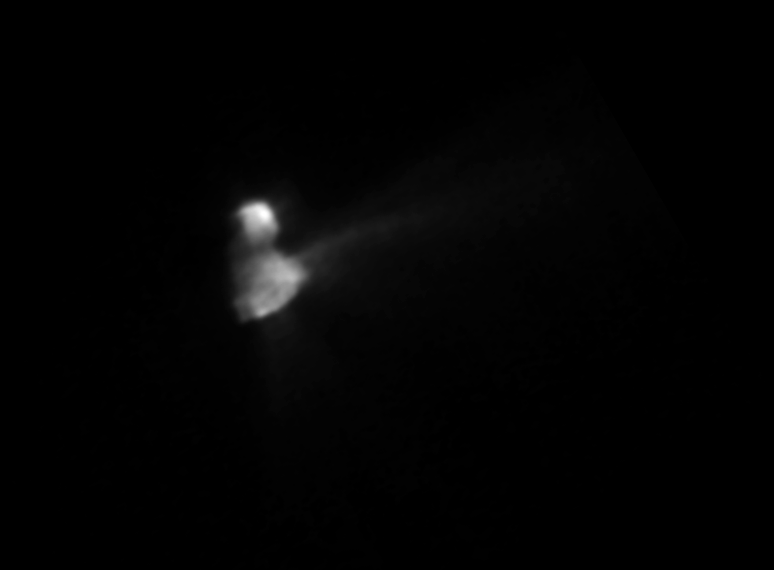
Left: Model of the Vega spacecraft on display at the Stephen F. Udvar-Hazy Center of the Smithsonian Institution’s National Air and Space Museum (NASM) in Chantilly, Virginia. Credit: Image courtesy NASM. Right: Image of Comet Halley taken by the Vega-2 spacecraft from 5,000 miles away. Credit: Image courtesy Russian Academy of Science.
The Soviet Union launched the Vega-1 and Vega-2 spacecraft on dual missions to study Venus and Halley’s Comet — Vega is a contraction for the words Venera and Galley, the Russian words for Venus and Halley. After dropping landers and balloons off at Venus, and using that planet’s gravity to alter their trajectory, the flyby sections of the Vega spacecraft flew on toward Halley’s Comet. Vega-1 returned the first images of the comet on March 4, 1986, before passing within 5,525 miles of its nucleus two days later. It returned more than 500 images of the comet. Vega-2 made its closest approach on March 9, at a distance of 4,990 miles, returning 700 images of the comet.
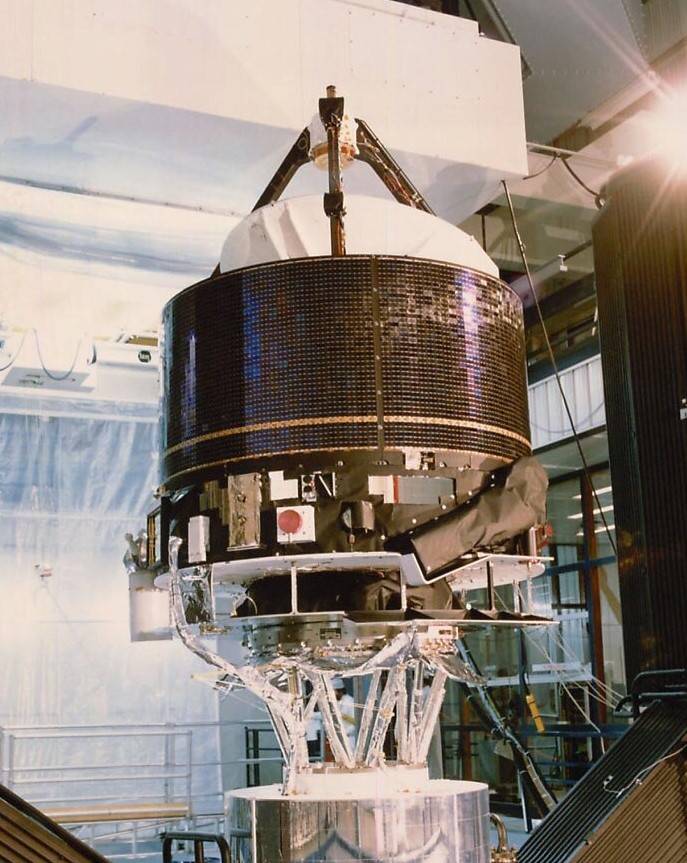
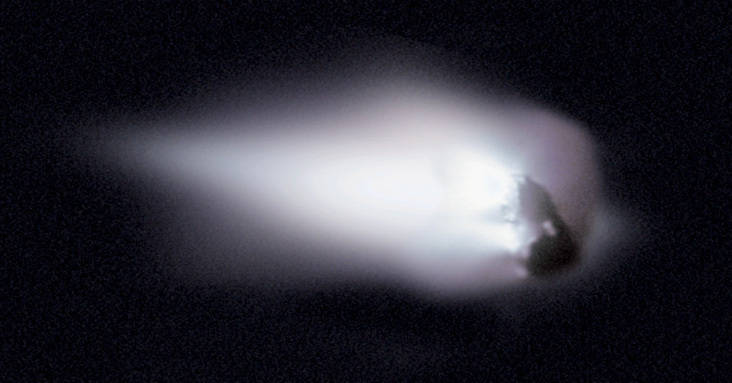
Left: The European Space Agency’s Giotto spacecraft during preflight testing. Right: Giotto image of Comet Halley’s nucleus as it receded from the Sun. Credit: Images courtesy ESA.
The European Space Agency (ESA) launched the Giotto spacecraft in July 1985, dedicated to close-up observations of Halley’s Comet. Following the Vega-1 and Vega-2 observations, Giotto flew within 370 miles of the comet’s nucleus. Images returned before an impact with a dust particle disabled the camera showed Halley’s nucleus as a dark peanut-shaped body, measuring 9 by 4 by 6 miles. Only 10 percent of the comet’s surface appeared to be active, with three outgassing jets seen on its sunlit side.
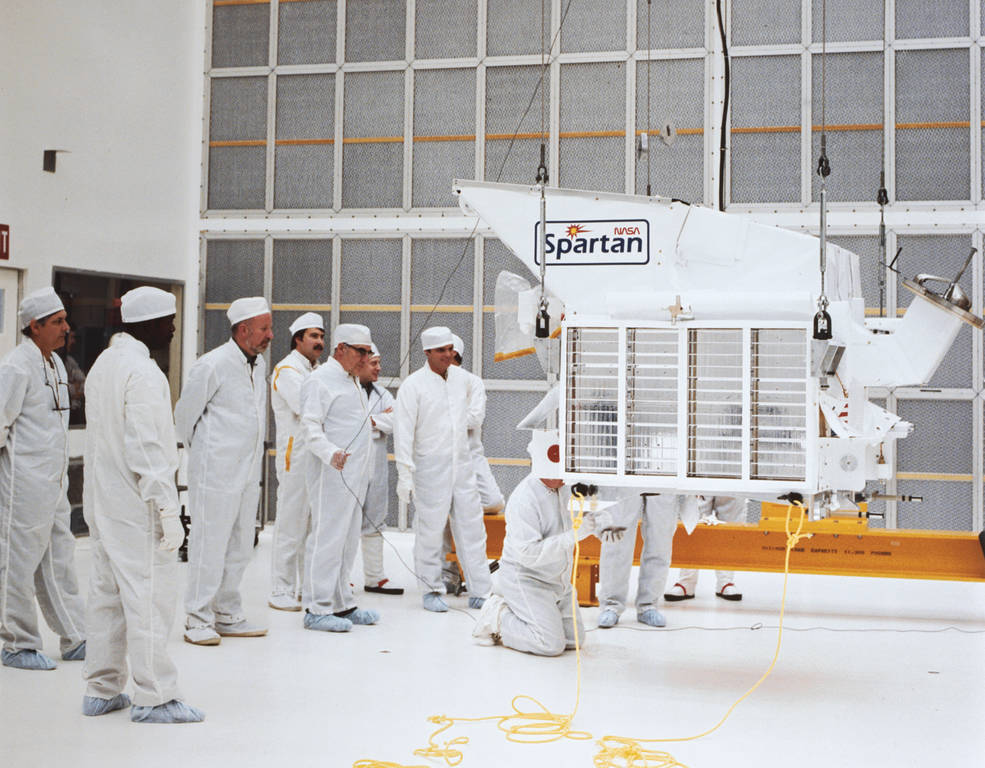
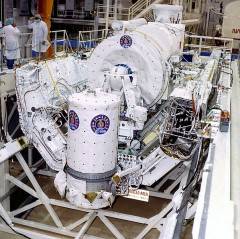
Left: The SPARTAN-203 (SPARTAN-Halley) free flyer during preflight testing before the STS-51L mission. Right: The Astro-1 payload prior to STS-35 in 1990, the same suite of instruments planned for the canceled March 1986 STS-61E mission to observe Comet Halley.
Plans for NASA to observe the comet using instruments aboard two space shuttle missions succumbed to the Jan. 28, 1986 Challenger accident. The ill-fated STS-51L mission carried the SPARTAN-203 free flyer spacecraft, also known as SPARTAN-Halley since its instruments were dedicated to observing the comet during its five-day mission. The satellite was lost in the accident. The next planned space shuttle launch, Columbia’s STS-61E mission, planned to carry the Astro-1 observatory – a suite of three ultraviolet and visible light telescopes. The nine-day mission, planned for launch on March 6, 1986, and timed to study Halley’s Comet, was canceled in the wake of the accident. The Astro-1 telescopes eventually flew on the STS-35 mission in December 1990, but Halley’s Comet was no longer their target. Since the Halley Armada of 1986, a series of ever-more sophisticated spacecraft have explored a variety of comets, conducting scientific studies, landing on cometary nuclei, and even returning samples from cometary tails, adding to our knowledge of these primordial solar system objects.
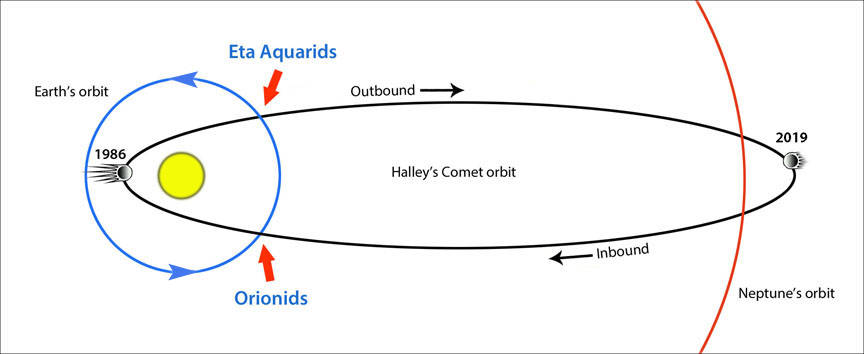
The orbital path of Halley’s Comet and the Earth, showing the two regions where the Eta Aquariid and Orionid meteor showers occur. Credit: Image courtesy Sky and Telescope.
In addition to its infrequent passes through the inner solar system, Halley’s Comet provides two annual celestial spectacles to Earthbound viewers. The annual Eta Aquarid and Orionid meteor showers, occurring in May and October, respectively, occur as the Earth moves through a trail of debris left behind by Halley’s Comet. The peak of the 2021 Orionid meteor shower will occur in the early morning of Oct. 20, although a full Moon that night will limit visibility. The peak of the Eta Aquarids in 2022 will occur in the morning of May 7, and the Moon will not affect that event. After reaching its furthest distance from the Sun in December 2023, Halley’s Comet will swoop back in toward the inner solar system and reach its next perihelion on July 28, 2061. Earthbound viewing should be favorable as the two objects will be on the same side of the Sun. One can only speculate at the scientific return from any spacecraft studies, given another 40 years of technological advancement.
To be continued…

























